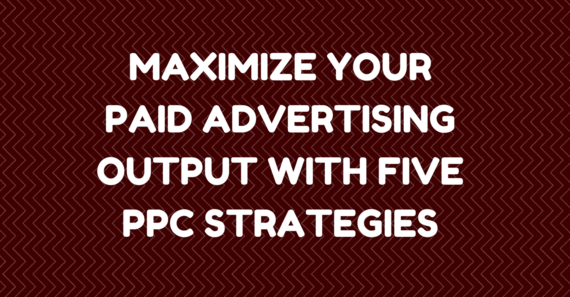- Bid Amount
The higher the relevancy of your ads and their landing pages to the users, the higher the quality score ( ranging from 1-10)
The higher the quality score, the higher the Google ad rankings.
As Google's main motto is to make searchers happy, they provide pricing discount for ads with the better quality score.
If you're new to PPC advertising, don't get intimidated by this algorithm. Stay away from these PPC mistakes to make the best out of your advertising budget.
Ignoring the Difference between Audience Traffic
A single ad doesn't serve the purpose. Target your ads depending on the interest, intention and behavior of the audience. Provide a unique experience by segmenting the traffic into following groups:
- Search Traffic: These types of searchers are on an active hunt to find the right product or service. They are easy to sell because they are clear about their issues and want a product to fulfil their needs.
Put yourself in your visitor's condition. You want to buy a particular water purifier, say model 'XYZ.' You come across an ad on the search engine which meets your expectation. After clicking the ad, you see a page with different water purifier models.
What is your first reaction?
'I think I have landed on the wrong page.'
It happens because you want to know more about 'XYZ' model, nothing else.
If someone made up the mind to buy a particular product, it is useless to confuse him/her with a sea of options?
It delays the buying process. Make a frictionless experience with a dedicated landing page for your incoming visitors.
Why build landing pages?
- Customers click on the ad with the hope of clearing the confusion. They don't want to add more confusion. With a dedicated landing page, they see what they want to see.
No Idea of Buyer Personas
Most of the advertisers start their PPC management without defining their target audience. The best way to attract the most valuable leads is by investing time in buyer personas.
A buyer persona is a detailed description about your prospects. It addresses the issues of your buyers by considering their demographic, motivations, attitudes, and goals.
By mapping out the journey, it becomes easy for the company to analyze buyer's buying decision.
The downfalls of writing ads without knowing the target audience:
- The advertisers don't know how to proceed with the first step of writing the ad.
So, respect your reader's time by understanding and defining your audience.
Neglecting the Mobile Audience
If you are still pushing your desktop ads to mobile, you might change your strategy after reading this news:
In 2015, for the first time, there were more Google searches on mobile devices than desktop computers. According to this report, there were more than one billion searches per month from devices with screens less than six inches only.
Treat your mobile and desktop ads differently. Take a separate test for mobile and desktop ads. Make sure you have responsive landing pages for enhancing user's viewing experience.
Instead of allocating all your budget on the desktop audience, invest in mobile specific ads and mobile-specific extensions.
As the mobile audience is gaining popularity, direct your energies on understanding their behavior, motivation, and intention.
Lack of Testing
Check the analytics and conversions before running the PPC campaigns. Run two or more ads simultaneously to find out which ad is worth the investment.
If you want to increase the CTR, run ads with slight differences in the copy. Before sending any paid traffic to your landing page, make sure your ads are working on different browsers.
Use Inspect Element option, right mouse click and scroll down to the last option, in Google Chrome to look the output of your landing page on different devices.
You have defined your target audience. You know the difference between search, social, and display traffic audience.
You have understood the importance of landing pages and persuasive ad copy. You are also not neglecting the mobile audience.
But, here is the problem:
What's the use of all these efforts when the visitors can't buy anything from you?
Never irritate your buyers with a broken check-out process. Check out everything in advance to avoid this embarrassing situation.

